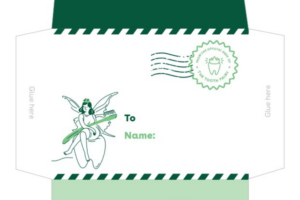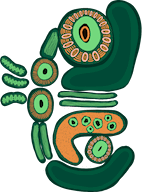
Do you know everything about the tooth fairy?
Download your Tooth Fairy items here
We know the arrival of a lost tooth can happen quickly, so we wanted to ensure you have easy access to everything you need for a visit from the tooth fairy. So please find below your free, printable downloads of tooth fairy-related products by clicking on the images. We have worked closely with the tooth fairy to develop a perfect tooth-sized envelope and a letter and certificate from the tooth fairy.
Everything you need to know about the tooth fairy
Most of us had a few visits from the tooth fairy when we were small. Their visit when we were sleeping was usually acknowledged by a coin left in exchange for the lost tooth. As adults, the idea of losing a tooth is not such a joyful idea, though as children, losing baby teeth is one of those developmental stages which can be something to celebrate.
In the Middle Ages, superstitions were associated around baby teeth and their correct disposal so the child could be protected from witches in the afterlife. The modern interpretation is a little less scary and has been traced to a 1908 Chicago newspaper article relating to household hints. This offered guidance to mothers on the ideal way to encourage a ‘refractory child’ to allow a loose tooth to be removed.
Most countries and ethnicities have their own version of how the tooth fairy tradition evolved, though many of us have an image of the tooth fairy being female, pixie like and waving a magic wand. Of course, she has a radiant smile and if we were to meet her, would be the perfect source of information about baby teeth and how to care for them.
5 fun facts about the tooth fairy
- In Japan, the tradition is for lost upper teeth to be thrown in a straight line to the ground and lower teeth straight up to the air. This is thought to influence how straight the adult teeth will grow.
- Many Latin and European countries have a tooth mouse, rather than a tooth fairy.
- In parts of Scotland, a white fairy rat, instead of the tooth fairy, exchanges teeth for coins.
- The Vikings considered baby teeth to bring good luck in a battle and would wear necklaces made out of baby teeth.
- In Ireland, the tooth fairy is a leprechaun girl, sometimes called Anna Bogle. Because leprechauns are not meant to steal, she leaves a piece of gold in exchange for the child’s tooth.
Where do all those baby teeth go?
Depending on where you come from, the tooth fairy can either repurpose baby teeth or will just dispose of them – ideally, hidden in the rubbish bin so they can’t be found by small eyes. In some parts of the world, the tooth fairy has more of a recycling philosophy and uses baby teeth to build her fairy castle. Of course, she only wants white and shiny teeth so her castle shimmers brightly and it is this image which is often used to prompt children to brush their teeth.
More often than is intended, the tired tooth fairy can forget her important night time task of retrieving a baby tooth from under the child’s pillow or from a glass of water beside the bed. In this case, she needs to think very carefully about how to make plans to return on a subsequent night.
Sometimes the tooth fairy gives baby teeth to the children’s parents, to be kept safe for later reflection. A small container or ‘keepsake’ box is the ideal way to store these treasures, though can also be the cause for sadness and perhaps a few tears.
